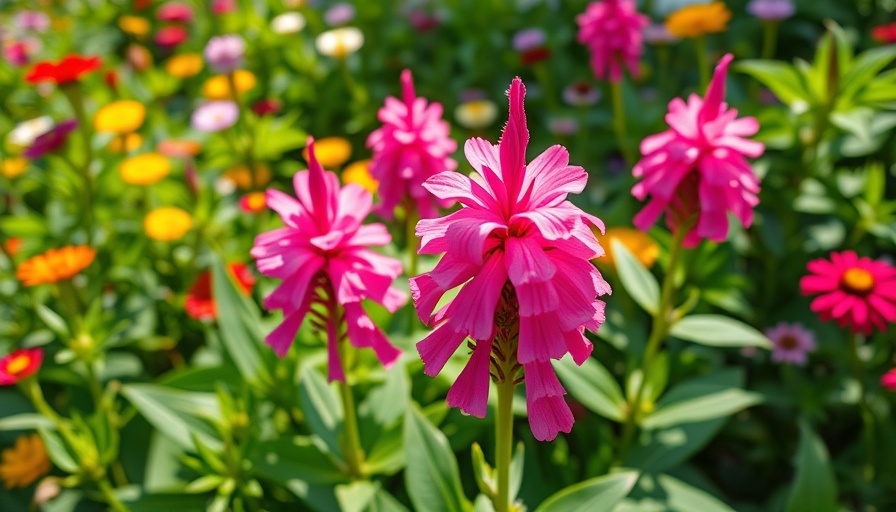
The Hidden Gem of North American Gardens: Turtlehead Flowers
As urban gardeners increasingly seek pollinator-friendly and low-maintenance flora, turtlehead (Chelone spp.) emerges as a stellar choice. With their unique two-lipped blooms reminiscent of a turtle's head, these native plants not only beautify landscapes but also support the wildlife crucial to maintaining healthy ecosystems.
Distinct Characteristics and Habitat Needs
Turtlehead flowers flourish in moist, shady environments, making them perfect candidates for that tricky pond edge or the consistently wet areas around downspouts. Growing typically between 1 and 4 feet, these perennials offer blooms in shades of pink, white, and purple from late summer to autumn, adding a splash of vibrant color when many other garden plants are winding down.
Growing Turtleheads: Practical Tips for Success
To cultivate turtleheads successfully, plant them in rich, moist soil with a slightly acidic pH, ideally between 6.0 and 7.0. While they can tolerate full sun, they thrive best in partial shade, especially in summer heat. Remember, watering is paramount—these plants prefer consistently moist soil, especially during their first year as they establish their roots. Neglecting their moisture needs can lead to wilting or crispy leaves, so a secure watering regimen is key.
Propagation: Get More Plants from Your Garden
Once established, turtleheads can easily be propagated by division. This method provides a sustainable way to expand your garden while supporting biodiversity. The best time to divide them is early spring when new growth emerges. Simply separate the clump into sections, ensuring each has healthy roots, and replant them in prepared beds.
Common Pests and Issues: Maintain Your Garden’s Health
Turtlehead flowers are remarkably pest-resistant, yet they can occasionally face botanical challenges such as powdery mildew due to poor air circulation. To prevent this, ensure the plants are spaced adequately to facilitate airflow and avoid overly dense growth.
Companion Plants that Enhance Turtlehead’s Natural Beauty
Turtleheads flourish alongside various moisture-loving companions. Consider planting marsh marigolds, which add bright yellow blooms and contrast beautifully with the turtlehead's gentle hues. Toad lilies also complement turtleheads, introducing distinctive, orchid-like flowers that thrive in similar conditions.
A Climate-Friendly Option for Eco-Conscious Gardeners
In an age where climate-friendly practices are more valuable than ever, the turtlehead stands out as a sustainable option. Their adaptability to wet environments allows gardeners to reclaim difficult areas, reducing the need for excessive irrigation or chemical fertilizers. Additionally, these flowers are documented to attract beneficial pollinators like bees and butterflies, making them critical for maintaining ecological balance.
Embrace the Joy of Gardening with Turtlehead Flowers
Turtlehead plants are not just another flower; they are a commitment to self-sufficiency and biodiversity in your garden. By cultivating this resilient perennial, you contribute to a healthier ecosystem while enjoying the beauty it brings to your home.
So why not take action and find a spot for turtlehead in your garden this season? Not only will your landscape benefit from their visual appeal, but you'll be enhancing the local habitat, creating a win-win situation for you and your pollinator friends!
 Add Row
Add Row  Add
Add 




Write A Comment